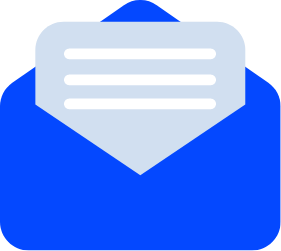


Are you managing your rewards on separate spreadsheets instead of using a rewards management platform?
If so, you’re not alone. Aon’s Stuart Hyland, Jackie Waller, and Anne Marie Knuth say they “still come across large and complex national and international organisations using basic spreadsheets to manage their payroll and calculate budgets and bonus awards.”
Technology has not yet reshaped rewards programs like it has other areas of business. It’s time for that to change. Rewards management platforms have the potential to transform how you run your total reward program.
Here are three reasons to adopt a cloud-based rewards management platform today.
With a cloud-based rewards management platform, it’s easy for HR teams to see the bigger picture. Rather than storing data in separate spreadsheets, a rewards management platform brings together disparate data sources and presents them in one single view.
This makes it much easier to analyze your rewards program. Regular analysis of your rewards program is essential to maximize its effectiveness, says Joe Price, a senior reward consultant at Paydata. “It should be meeting the needs of all stakeholders and taking into account feedback across the organisation to remain fit for purpose.”
The insights HR professionals derive from this single source of truth allows them to make evidence-based decisions on the creation of new rewards that actually meet the needs of their employees, say PwC’s Andrew Curcio and Alastair Woods.
If you want to drive employee engagement, then make it as easy as possible for employees to understand their rewards. But that can’t happen when you’re using paper or spreadsheets to manage rewards. With a rewards management platform, however, it becomes a lot easier.
Currently, around 16 percent of employers in the UK use paper to communicate their rewards strategy, according to Aon’s 2020 Benefits and Trends Survey. They’re in the minority, though. Over one-third (37 percent) use a website to communicate total reward and 9 percent use an app.
But it’s not enough just to communicate your rewards. Employees need to know where they can find their rewards themselves. “Creating a one-stop-shop for employees to go for all things reward should be the first step,” writes Leigh Bornstein, chief experience officer at uFlexReward.
“It should be available online and easily accessible via any device,” she explains. “Proper communication can be done through online total reward statements as the first point of entry. Online statements are where information should be consolidated so that employees are not jumping from multiple sources to view their personal total reward information.”

Most employee rewards programs lack personalization, says Jonathan Best, account director for EMEA and South America at uFlexReward.
“The trend over the last decade has been for organizations to use benefit technology that is tied to benefit brokerage,” he writes. “That business model provides employees with a set of pre-brokered benefits to choose from which do not reflect what they want, nor provide the level of personalization required.”
If you want to change that and personalize your rewards programs, bring all rewards data together in a single platform, Best says. It’s only by adopting a cloud-based rewards management platform that you can gain the insights you need to personalize rewards, while also providing employees with a space where they can access their rewards on any device from anywhere in the world and tailor them to their preferences.
Companies that do personalize rewards with such a platform stand to gain significantly as a result. Especially when it comes to talent, say Deloitte’s Dimple Agarwal, Josh Bersin, Gaurav Lahiri, Jeffrey Schwartz, and Erica Volini.
“Our view is that a system that offers a variety of rewards and a way to personalize them is the only structure with the required flexibility to meet the diverse needs and desires of today’s variegated workforce,” they write. “Talent today wants a custom rewards experience that reflects how they live, work, and communicate — not a one-size-fits-all approach rooted in the past.”
Your employees want it too, so much so that many would sacrifice part of their salary for personalized benefits, writes Jasmine Urquhart at People Management. A full one-half of the 1,200 employees surveyed by MetLife UK said they’d reduce their pay for tailored rewards, and three-quarters said they’d work harder for an employer that tailored rewards to their needs, Urquhart reports.
You can’t get there with spreadsheets. In fact, continuing to manage a total reward program with spreadsheets will see your organization fall further and further behind. That’s not just in terms of personalization efforts, but also employee engagement, rewards insights, and your wider rewards strategy as a whole. It makes good business sense then to ditch the spreadsheets and implement a rewards management platform today.
Images by: Mika Baumeister, New Data Services
